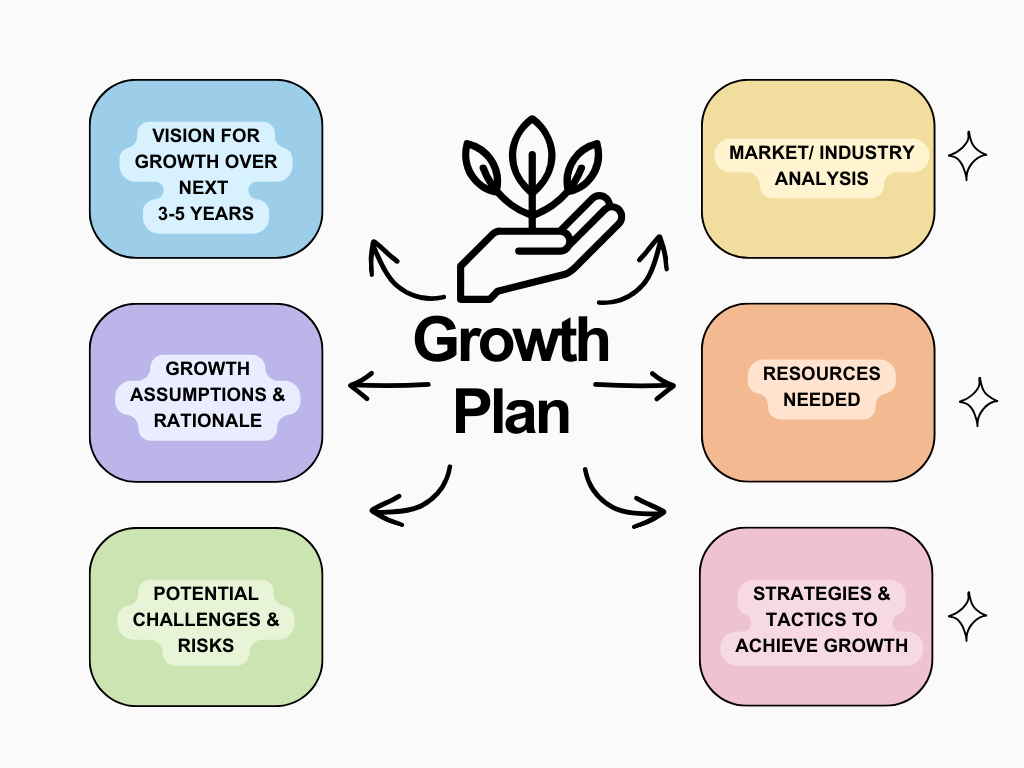How to Plan for Business Growth

Planning for business growth is a crucial endeavor that requires foresight, strategic thinking, and a comprehensive approach to ensure sustainable development and success. Whether you are a startup entrepreneur or managing an established company, effective growth planning involves several key steps and considerations. This guide will provide a detailed framework to help you navigate the complexities of business growth planning and achieve your expansion goals.
Understanding Business Growth
Business growth encompasses various aspects of expanding operations, increasing market share, and improving profitability. It can involve expanding into new markets, launching new products or services, increasing sales channels, or enhancing operational efficiency. Growth is essential for staying competitive, attracting investment, and maximizing long-term profitability.
Key Steps to Plan for Business Growth
1. Assess Current Performance and Resources
Before planning for growth, assess your current business performance, financial health, and available resources. Conduct a SWOT analysis (Strengths, Weaknesses, Opportunities, Threats) to identify internal strengths and weaknesses, as well as external opportunities and threats in the market.
2. Set Clear and Measurable Goals
Define specific, measurable, achievable, relevant, and time-bound (SMART) goals for your business growth. These goals should align with your overall business vision and mission. Examples include increasing revenue by a certain percentage, expanding into new geographic markets, or launching a new product line within a specified timeframe.
3. Understand Your Market and Customers
Conduct market research to understand industry trends, customer preferences, and competitive landscape. Identify target customer segments and their needs, preferences, and purchasing behaviors. Use customer feedback and market data to tailor your growth strategy effectively.
4. Develop a Growth Strategy
Based on your goals and market insights, develop a growth strategy that outlines how you will achieve your objectives. Consider strategies such as market penetration, product development, market expansion, diversification, or acquisition. Choose strategies that capitalize on your strengths and address potential weaknesses.
5. Financial Planning and Resource Allocation
Create a detailed financial plan that forecasts revenue projections, expenses, cash flow requirements, and funding needs for growth initiatives. Assess financing options such as equity financing, debt financing, or reinvested profits. Allocate resources efficiently to support growth without compromising existing operations.
6. Operational and Organizational Readiness
Ensure your business operations and organizational structure can support growth initiatives. Assess scalability, technology infrastructure, workforce capabilities, and operational processes. Implement necessary improvements or upgrades to enhance efficiency, productivity, and customer service capabilities.
7. Marketing and Sales Strategies
Develop marketing and sales strategies to promote your products or services, attract new customers, and retain existing ones. Utilize digital marketing, social media, content marketing, and targeted advertising to reach your target audience effectively. Align sales efforts with growth objectives to drive revenue growth.
8. Monitor and Evaluate Progress
Implement performance metrics and key performance indicators (KPIs) to monitor progress towards your growth goals. Regularly evaluate the effectiveness of your strategies and make adjustments as needed. Stay agile and responsive to market changes, customer feedback, and competitive dynamics.
9. Risk Management and Contingency Planning
Identify potential risks and challenges that could impact your growth initiatives, such as economic downturns, regulatory changes, or competitive threats. Develop risk mitigation strategies and contingency plans to minimize disruptions and protect business continuity.
10. Seek Professional Advice and Mentorship
Consider seeking advice from business mentors, consultants, or industry experts who can provide guidance and insights based on their experience. Networking with peers, joining industry associations, or participating in entrepreneurial programs can also provide valuable support and resources.
Conclusion
Planning for business growth requires careful analysis, strategic planning, and proactive execution to achieve sustainable expansion and long-term success. By understanding your market, setting clear goals, developing a comprehensive growth strategy, and leveraging available resources effectively, you can position your business for growth opportunities and navigate challenges with confidence. Continuously monitor progress, adapt to market dynamics, and innovate to stay ahead of competitors and capitalize on emerging trends. With a structured approach and a commitment to excellence, you can build a resilient and thriving business prepared for future growth and profitability.







